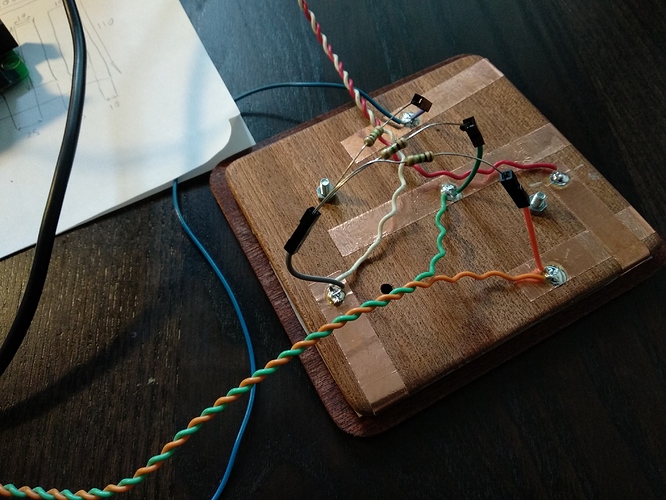Hi,
I´m making a synth with six oscillators and I want to control how much of each goes into the mix with six diy ribbon sensors.
For making the ribbon sensors I plan to do what is described in this web:
http://memoir.okno.be/phys_comp_tutorial/ribbon4/ribbon4.htm
BTW, I have been reading this tutorial for the last two weeks and I just realised it was made by Johannes Taelman 
I had like 50 VHS tapes waiting to be thrown away, and I used my multimeter hoping to find one that had the right amount of resistance.
After measuring all of those that didn´t have two glossy sides (those don´t work) I found only one (The Lion King) that measured 300K in 7cm, the rest were unusable.
I made a test and it seems to work, as you can see in this link:
Now I´m planning to make six of them on one board, and it is going to be a lot of work because I need to be very careful to make all six of them work fine in the first try if possible.
So, since it is going to be one whole afternoon measuring tape and cutting like a surgeon, I would like to ask first if it is going to work.
I know one of them works, but will six 300K ribbon sensors work at the same time? I´m not that confortable with electronics to know this.
I know that I can use one at a time and it will work, but I plan to use the six of them at the same time, that is why I´m worried that maybe six 300K "potentiometers" at the same time might not give correct readings on the inputs of the axoloti, since the VDDA current might not be enough. As I said, I haven´t had any training in electronics and I don´t really know how to apply ohms law (if that is what I should be applying) to this case.


